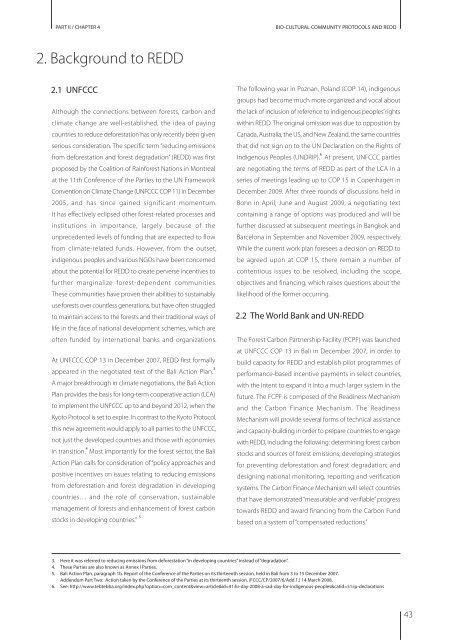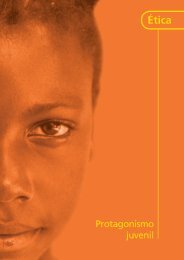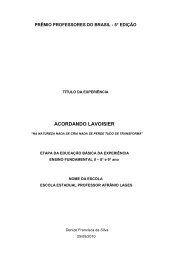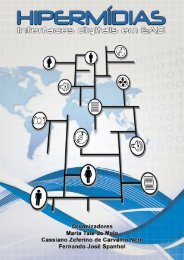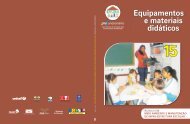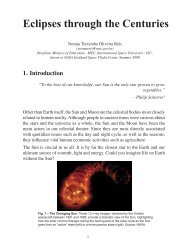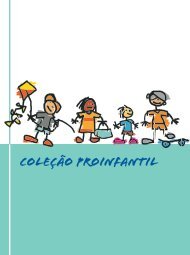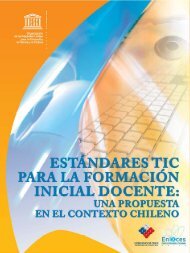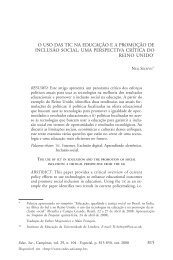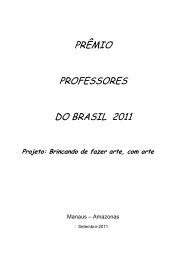BIO-CULTURAL COMMUNITY PROTOCOLS - Portal do Professor
BIO-CULTURAL COMMUNITY PROTOCOLS - Portal do Professor
BIO-CULTURAL COMMUNITY PROTOCOLS - Portal do Professor
You also want an ePaper? Increase the reach of your titles
YUMPU automatically turns print PDFs into web optimized ePapers that Google loves.
PART II / CHAPTER 4<br />
2. Background to REDD<br />
2.1 UNFCCC<br />
Although the connections between forests, carbon and<br />
climate change are well-established, the idea of paying<br />
countries to reduce deforestation has only recently been given<br />
serious consideration. The specific term “reducing emissions<br />
from deforestation and forest degradation” (REDD) was first<br />
proposed by the Coalition of Rainforest Nations in Montreal<br />
at the 11th Conference of the Parties to the UN Framework<br />
Convention on Climate Change (UNFCCC COP 11) in December<br />
2005, and has since gained significant momentum.<br />
It has effectively eclipsed other forest-related processes and<br />
institutions in importance, largely because of the<br />
unprecedented levels of funding that are expected to flow<br />
from climate-related funds. However, from the outset,<br />
indigenous peoples and various NGOs have been concerned<br />
about the potential for REDD to create perverse incentives to<br />
further marginalize forest-dependent communities.<br />
These communities have proven their abilities to sustainably<br />
use forests over countless generations, but have often struggled<br />
to maintain access to the forests and their traditional ways of<br />
life in the face of national development schemes, which are<br />
often funded by international banks and organizations.<br />
At UNFCCC COP 13 in December 2007, REDD first formally<br />
appeared in the negotiated text of the Bali Action Plan. 3<br />
A major breakthrough in climate negotiations, the Bali Action<br />
Plan provides the basis for long-term cooperative action (LCA)<br />
to implement the UNFCCC up to and beyond 2012, when the<br />
Kyoto Protocol is set to expire. In contrast to the Kyoto Protocol,<br />
this new agreement would apply to all parties to the UNFCCC,<br />
not just the developed countries and those with economies<br />
in transition. 4<br />
Most importantly for the forest sector, the Bali<br />
Action Plan calls for consideration of “policy approaches and<br />
positive incentives on issues relating to reducing emissions<br />
from deforestation and forest degradation in developing<br />
countries… and the role of conservation, sustainable<br />
management of forests and enhancement of forest carbon<br />
stocks in developing countries.” 5<br />
<strong>BIO</strong>-<strong>CULTURAL</strong> <strong>COMMUNITY</strong> <strong>PROTOCOLS</strong> AND REDD<br />
The following year in Poznan, Poland (COP 14), indigenous<br />
groups had become much more organized and vocal about<br />
the lack of inclusion of reference to indigenous peoples’ rights<br />
within REDD. The original omission was due to opposition by<br />
Canada, Australia, the US, and New Zealand, the same countries<br />
that did not sign on to the UN Declaration on the Rights of<br />
Indigenous Peoples (UNDRIP). 6<br />
At present, UNFCCC parties<br />
are negotiating the terms of REDD as part of the LCA in a<br />
series of meetings leading up to COP 15 in Copenhagen in<br />
December 2009. After three rounds of discussions held in<br />
Bonn in April, June and August 2009, a negotiating text<br />
containing a range of options was produced and will be<br />
further discussed at subsequent meetings in Bangkok and<br />
Barcelona in September and November 2009, respectively.<br />
While the current work plan foresees a decision on REDD to<br />
be agreed upon at COP 15, there remain a number of<br />
contentious issues to be resolved, including the scope,<br />
objectives and financing, which raises questions about the<br />
likelihood of the former occurring.<br />
2.2 The World Bank and UN-REDD<br />
The Forest Carbon Partnership Facility (FCPF) was launched<br />
at UNFCCC COP 13 in Bali in December 2007, in order to<br />
build capacity for REDD and establish pilot programmes of<br />
performance-based incentive payments in select countries,<br />
with the intent to expand it into a much larger system in the<br />
future. The FCPF is composed of the Readiness Mechanism<br />
and the Carbon Finance Mechanism. The Readiness<br />
Mechanism will provide several forms of technical assistance<br />
and capacity-building in order to prepare countries to engage<br />
with REDD, including the following: determining forest carbon<br />
stocks and sources of forest emissions; developing strategies<br />
for preventing deforestation and forest degradation; and<br />
designing national monitoring, reporting and verification<br />
systems. The Carbon Finance Mechanism will select countries<br />
that have demonstrated “measurable and verifiable” progress<br />
towards REDD and award financing from the Carbon Fund<br />
based on a system of “compensated reductions.”<br />
3. Here it was referred to reducing emissions from deforestation “in developing countries” instead of “degradation”.<br />
4. These Parties are also known as Annex I Parties.<br />
5. Bali Action Plan, paragraph 1b. Report of the Conference of the Parties on its thirteenth session, held in Bali from 3 to 15 December 2007.<br />
Addendum Part Two: Action taken by the Conference of the Parties at its thirteenth session. (FCCC/CP/2007/6/Add.1.) 14 March 2008.<br />
6. See: http://www.tebtebba.org/index.php?option=com_content&view=article&id=41:hr-day-2008-a-sad-day-for-indigenous-peoples&catid=51:ip-declarations<br />
43


